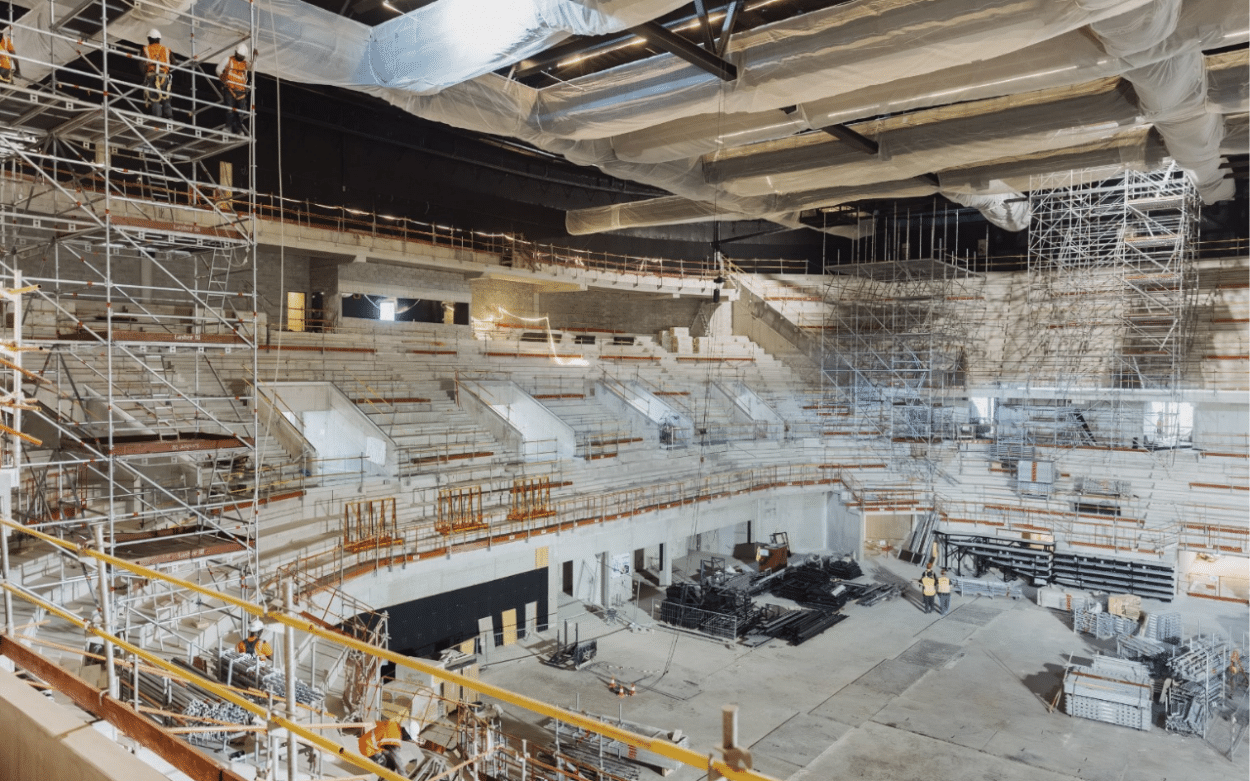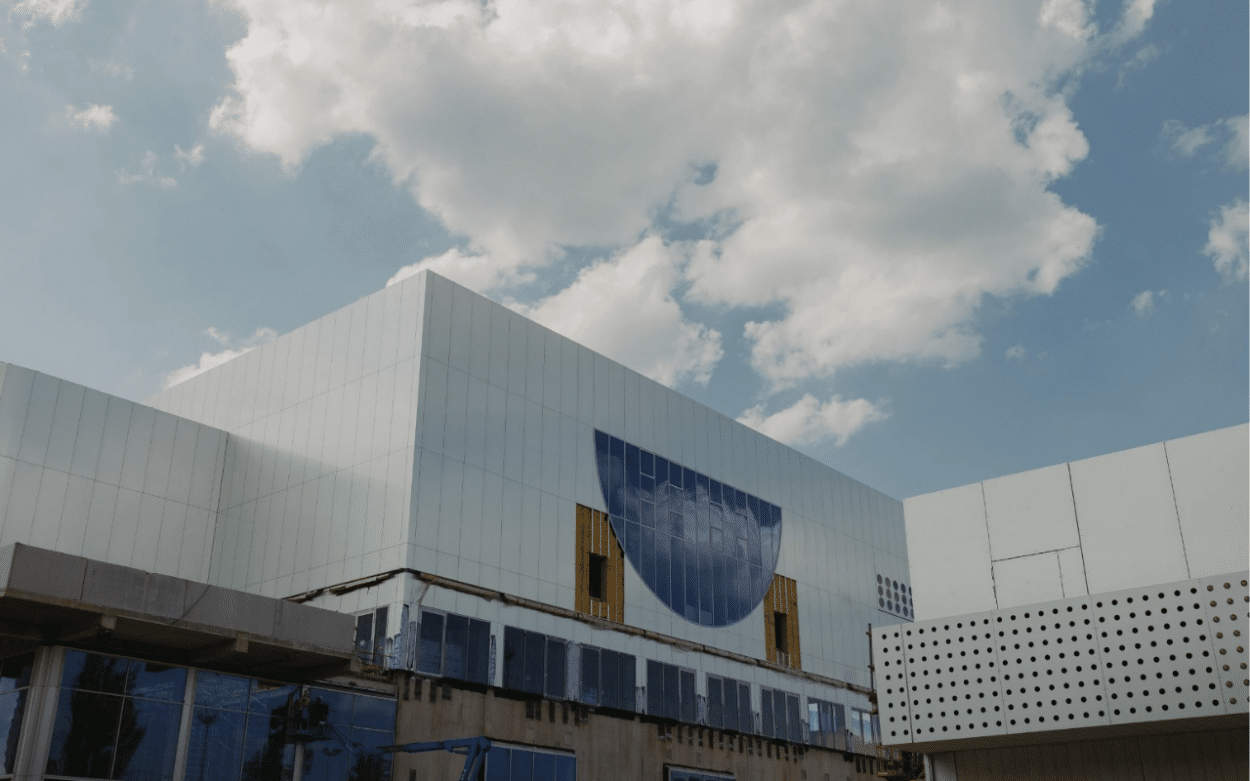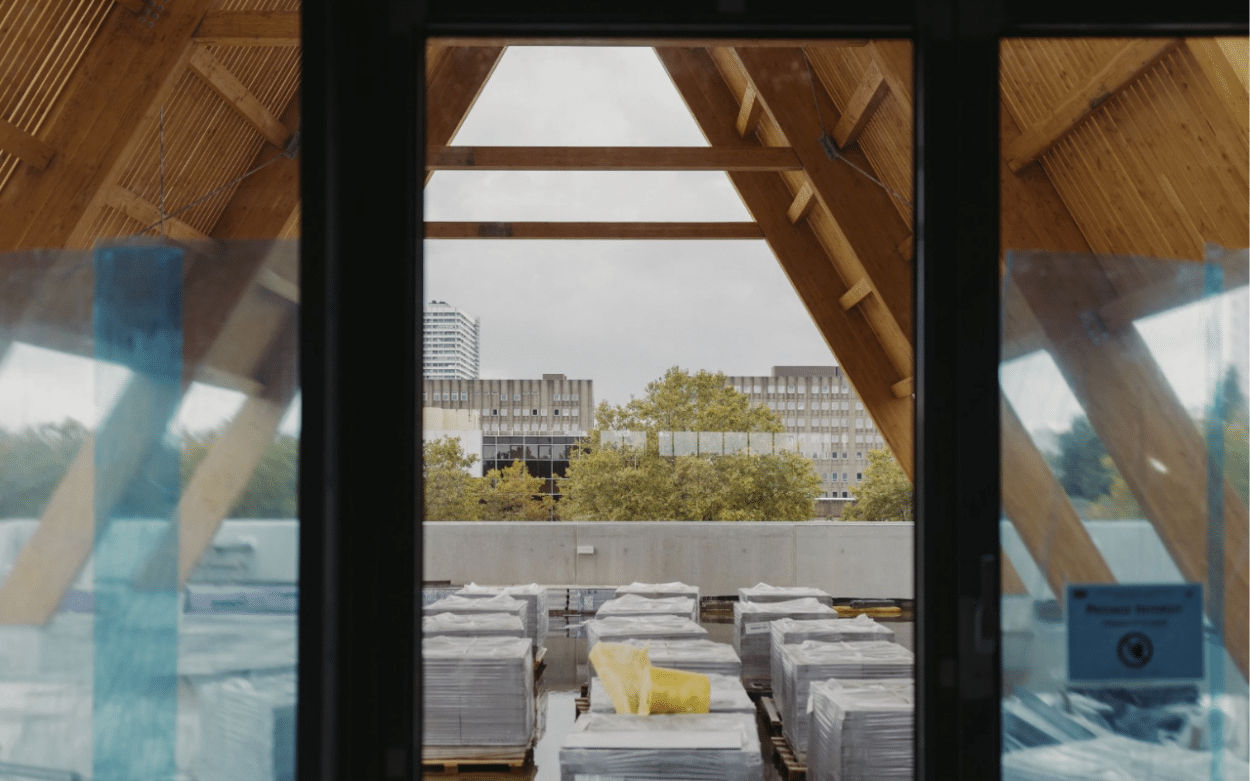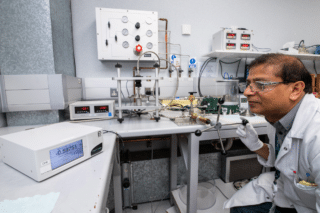Amidst great anticipation, the Adidas Arena, nestled in the heart of Paris’s 18th arrondissement near Porte de la Chapelle, opened its doors to the public for the first time on Sunday, February 11th, hosting a match for the Paris Basketball team. As the only site constructed within the city limits for the Paris 2024 Olympic Games, the arena marks a significant milestone in the city’s sporting infrastructure.
Paris 2024, which runs from July 26 to August 11, has pledged to reduce the event’s carbon footprint by 50% since it was held in London in 2012. To achieve this goal, efforts were concentrated on the infrastructure. The aim was to make new buildings sustainable.
A few months ago, we visited the new nautical stadium in Marseille, where the sailing competitions of the Paris 2024 Olympic Games will take place. The stadium features a low-carbon concrete structure, with bio-sourced materials like hemp used for thermal insulation. (WATCH OUR VIDEO REPORT)
In Paris, the Adidas Arena, the only building constructed within the city limits for the Paris 2024 Olympic Games, was also designed to be sustainable. This low-carbon venue features a vegetated roof and is heated and air-conditioned by geothermal energy. It is only accessible by public transport or bicycle.
During the Olympics, the Adidas Arena will host badminton (from July 27 to August 5), rhythmic gymnastics (August 8 to 10), para-badminton, and para-powerlifting (September 4 to 8).



A Beacon of Sustainability
The Adidas Arena will host three gymnasiums. It is designed to accommodate 8,000 spectators and will serve as the home base for the Paris Basketball Club after the Olympics. It will also be a concert venue, with a capacity of 9,000 people.
For the organizers of the Games, it is aimed to set a new standard in low-carbon construction and to be an emblem of ecological consciousness.
Just like Marseille’s nautical stadium, the Adidas Arena incorporates innovative materials and technologies to minimize its environmental footprint. The building thus boasts several eco-friendly features:
It has recyclable steel façades. The structure of the two gymnasiums is entirely made of wood (400 tons). 300 m² of compressed earth bricks from the excavations of the Grand Paris transportation network were also used.
Construction group Bouygues Bâtiments Ile-de-France recycled 900 tonnes of waste out of the 944 produced. The Arena’s seats are made from recycled plastic, with six million plastic bottle caps repurposed for this.
80% of the building’s surfaces are also adorned with vegetation. This not only enhances the aesthetic appeal but also contributes to air purification and thermal regulation.
The building’s roof, now adorned with greenery spanning 1,700 square meters, stands as one of the largest vegetated surfaces in the city, rivaling even the iconic Parc des Expositions at Porte de Versailles.
Like all Olympic sites, the Adidas Arena will only be accessible by public transportation or bicycle.




Geothermal Energy
One of the most remarkable feats of engineering lies beneath the surface. An underground geothermal plant, partially powered by solar panels adorning the roof, will provide both warmth in winter and cooling relief during the sweltering summer months.
As concerns mount over the potential for heatwaves during the Olympic Games, the arena’s state-of-the-art climate control system is poised to ensure optimal conditions for athletes and spectators alike. Maintaining the integrity of the competitions is particularly crucial in gymnastics events where precise air management is essential.
Investment
The construction of the Arena costs approximately 127 million euros. In exchange for its name, Adidas will contribute 2.8 million euros per year. The sportswear group has also committed to donating 180,000 euros to support local sports activities, especially those targeting women.
The Arena is the first Olympic building to be delivered in the Paris area. Two other buildings are scheduled for delivery soon. The Olympic Village, also called Athletes’ Village, which will provide optimal accommodation for athletes will be made available starting from March 1, 2024.
The Olympic Aquatic Center, located in front of the Stade de France in Saint-Denis, is expected to be ready “late March 2024.”










